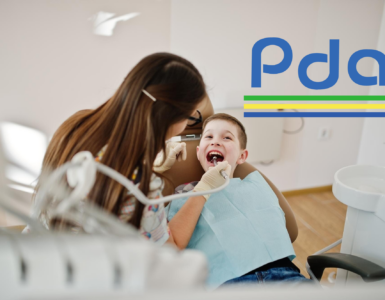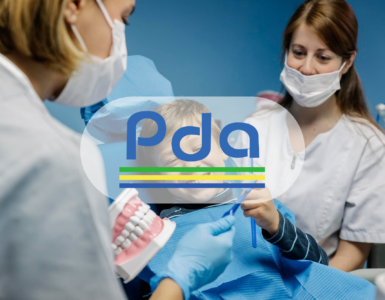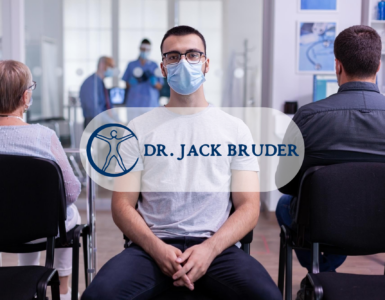The Growing Importance of Personalized Urology
Erectile dysfunction (ED) has long been recognized as one of the most prevalent men’s health concerns, affecting not only physical well-being but also emotional health, intimate relationships, and overall quality of life. While the condition can occur at any age, studies consistently show that the likelihood of experiencing ED increases substantially with age, particularly after 40. According to the Centers for Disease Control and Prevention, millions of American men live with ongoing challenges related to sexual function, yet many delay seeking treatment due to stigma, embarrassment, or a belief that symptoms are simply a “normal” part of aging.
In New York, the situation is even more complex. The city’s diverse populations present with highly varied medical histories, cultural attitudes, and lifestyle factors that influence both the causes and treatment of erectile dysfunction (ED). Urology experts practicing in this environment understand that standardized solutions often fail to meet the needs of patients whose conditions stem from very different underlying issues. As a result, more specialists are moving away from generic treatment models and embracing the power of highly personalized urology to deliver better, longer-lasting outcomes.
This shift reflects a broader evolution in modern medicine: precision-based approaches are rapidly replacing outdated, one-size-fits-all methods. In the case of ED, personalization is particularly crucial because the disorder may result from a wide spectrum of causes. For some men, the root issue may be cardiovascular disease, diabetes, or hypertension, conditions that directly affect blood flow and vascular health. For others, hormonal imbalances or neurological issues may play a central role, requiring therapies that restore balance or improve nerve signaling. Still, for many patients, erectile dysfunction (ED) is tied to psychological stressors, performance anxiety, or relationship dynamics that demand a sensitive, integrative approach combining medical treatment with counseling or lifestyle interventions.
By tailoring care to each individual, urologists can not only address the biological mechanisms behind ED but also account for cultural values, patient preferences, and personal goals. In New York especially, where patient populations are defined by extraordinary diversity, personalized urology represents not just a medical necessity but also a commitment to truly patient-centered healthcare.
Why Personalization Matters in Erectile Dysfunction Care
The Complex Causes of ED
Research from the National Institute of Diabetes and Digestive and Kidney Diseases (NIDDK) emphasizes that erectile dysfunction (ED) is rarely the result of a single cause. Instead, it often develops from a complex interaction of physical, psychological, and lifestyle-related conditions that reinforce one another. Cardiovascular disease is one of the most common contributors, as it can significantly impair blood flow to the penis, making it difficult to achieve or sustain an erection. Similarly, diabetes is a major risk factor because it damages both the nerves and the blood vessels involved in sexual function, creating long-term complications if left unmanaged.
Beyond these physical drivers, emotional and psychological health play an equally important role. Stress, anxiety, depression, and relationship difficulties can not only reduce sexual desire but also intensify physical symptoms, making ED a multidimensional challenge. For some men, the issue may originate in performance anxiety, while for others, chronic fatigue, obesity, or sedentary lifestyle habits contribute heavily to dysfunction. Even certain medications prescribed for unrelated conditions, such as antihypertensives or antidepressants, are known to have side effects that worsen erectile difficulties.
This interconnected nature of ED means that a thorough, individualized evaluation is essential. Urologists must consider how medical conditions, psychological well-being, and lifestyle behaviors overlap, ensuring that treatment strategies address all contributing factors rather than focusing narrowly on symptoms.

Moving Away from Standardized Treatments
Historically, oral medications such as phosphodiesterase type 5 inhibitors have been considered the first line of therapy for erectile dysfunction (ED). These drugs have provided effective relief for many men and remain a valuable option. However, clinical studies consistently show that up to 40% of patients do not respond adequately to this treatment alone. This statistic highlights a critical reality: while standardized therapies may provide temporary solutions, they often fail to resolve the deeper causes of ED.
Recognizing these limitations, modern urology has shifted toward more comprehensive and personalized approaches. Today, urologists frequently recommend a combination of diagnostic testing, laboratory evaluations, and imaging studies to identify underlying vascular, hormonal, or neurological issues. Equally important are lifestyle assessments that examine diet, exercise habits, sleep quality, and stress levels. Together, these insights provide the foundation for designing tailored treatment plans that go beyond symptom relief to address root causes.
Personalized care may involve a wide spectrum of solutions:
- Hormone replacement therapy for patients with testosterone deficiencies
- Advanced procedures such as shockwave therapy or penile implants when conventional methods fall short
- Lifestyle modifications, including weight management, smoking cessation, and improved cardiovascular health
- Psychological counseling or therapy for men whose ED is linked to stress, anxiety, or depression
This multidimensional model ensures not only a higher likelihood of treatment success but also significantly enhances patient satisfaction. When care is individualized, patients feel heard, understood, and supported, which in turn fosters stronger long-term outcomes and improved overall quality of life.
Diagnostic Advances Driving Personalization
One of the most significant developments in modern urology is the integration of advanced diagnostic tools that make it possible to tailor treatment to the unique needs of each patient. Instead of relying solely on symptom reports, physicians can now use precise testing methods to identify the root causes of erectile dysfunction (ED), ensuring that treatment plans are targeted, effective, and sustainable.
Imaging and Hormone Testing
State-of-the-art diagnostic tools allow urologists to assess vascular health, hormone levels, and nerve function with remarkable accuracy. Penile Doppler ultrasound, for instance, has become a cornerstone technology, offering detailed imaging of blood flow to the penis and helping to determine whether ED is primarily vascular in origin. In cases where poor circulation or arterial blockages are identified, physicians can recommend targeted interventions such as vascular therapy or cardiovascular risk management.
Hormonal evaluations are equally critical. By testing for testosterone deficiencies or imbalances in other endocrine systems, specialists can uncover issues that might otherwise go unnoticed. For example, low testosterone may not only contribute to erectile dysfunction (ED) but also affect energy levels, mood, and overall vitality. Correcting hormonal imbalances through replacement therapy or other medical interventions can therefore restore both sexual function and broader health.
These advanced assessments move beyond surface-level symptoms and deliver insights that empower physicians to design treatment strategies grounded in biological evidence rather than trial and error.
Psychological and Lifestyle Evaluations
Modern urology recognizes that ED is not exclusively a physical condition; it is also deeply intertwined with mental and emotional well-being. Psychological screening has become a standard part of comprehensive care, as anxiety, depression, or unresolved relationship stress can significantly reduce erectile performance. By incorporating mental health professionals into the treatment process, care teams are better equipped to address the psychological components of ED.
This holistic perspective ensures that patients receive well-rounded care. For example, a patient whose ED is aggravated by work-related stress may benefit from counseling or stress management strategies alongside medical treatment. Similarly, relationship therapy can help couples improve communication and intimacy, reducing psychological barriers that contribute to dysfunction.
Lifestyle evaluations also provide key insights into the daily habits that influence erectile health. Diet, exercise patterns, alcohol consumption, and smoking history are carefully reviewed, allowing urologists to recommend practical adjustments that complement medical therapies.
The Role of Preventive Medicine
Personalization in urology extends beyond treating current symptoms, it also plays a vital role in prevention. Specialists are increasingly focusing on identifying men who may be at higher risk of erectile dysfunction (ED) due to chronic conditions such as hypertension, obesity, or smoking-related vascular damage. By flagging these risks early, urologists can recommend preventive strategies that delay or even avert the onset of ED.
Preventive approaches often include counseling on lifestyle changes, such as adopting heart-healthy diets, maintaining consistent physical activity, and reducing harmful habits like excessive alcohol intake or smoking. When combined with regular medical monitoring, these interventions not only lower the risk of ED but also improve cardiovascular and metabolic health, which are closely tied to sexual function.
By integrating diagnostic innovation, psychological care, and preventive strategies, personalized urology sets a new standard of care. It ensures that men receive treatment plans that reflect their full health profile—not just the symptoms they present in the clinic.
Treatment Modalities Tailored to Patients
The evolution of personalized urology has transformed how erectile dysfunction (ED) is treated. Rather than defaulting to a single standard therapy, urologists now carefully evaluate each patient’s underlying causes, lifestyle, and preferences before recommending a plan. This patient-centered model ensures that men not only receive effective care but also feel supported in addressing both the physical and emotional dimensions of ED.
Oral and Injectable Therapies
Oral medications remain the first-line therapy for many men, particularly those seeking a non-invasive option with a track record of success. These drugs improve blood flow to the penis, making it easier to achieve and maintain an erection. For a significant percentage of patients, however, oral medications alone are not sufficient. In these cases, injectable therapies such as alprostadil provide an alternative pathway. By directly targeting penile tissue, injections can produce strong results in men who do not respond to pills.
In some situations, combination therapy is recommended, especially when multiple mechanisms of dysfunction are at play, such as vascular compromise combined with hormonal imbalance. This approach reflects the value of personalization: rather than offering a single solution, urologists design a regimen that directly aligns with the biological and lifestyle realities of the patient.
Patients seeking an erectile dysfunction doctor NYC often explore both oral and injectable options under the close supervision of specialists. Careful monitoring ensures that therapies remain effective over time, while side effects are minimized through dosage adjustments and individualized protocols.
Device-Based Interventions
For patients whose ED stems from severe vascular disease, spinal cord injury, or nerve damage, device-based therapies often become the most reliable option. Vacuum erection devices create negative pressure to draw blood into the penis, offering a non-surgical solution for men who prefer to avoid invasive procedures.
In cases where more advanced intervention is required, penile implants provide a highly effective and permanent treatment. These devices, surgically placed by skilled urologists, allow men to regain spontaneous sexual function and significantly improve quality of life. Surgical expertise is especially critical in these cases, which is why access to an experienced urologist Manhattan is considered invaluable for patients exploring this route.
Penile implants also have one of the highest satisfaction rates among ED treatments, particularly for men who have struggled with years of unsuccessful medical management.
Emerging Therapies
The field of urology continues to advance rapidly, with regenerative medicine and novel technologies reshaping the future of ED treatment. Low-intensity shockwave therapy is gaining attention for its ability to stimulate new blood vessel growth (angiogenesis) and improve penile blood flow naturally. Platelet-rich plasma (PRP) injections are being investigated for their potential to accelerate tissue repair, while stem cell research shows promise in restoring nerve and vascular function at the cellular level.
Although many of these therapies remain in clinical trials, their development underscores the field’s commitment to innovation and personalization. For men who have exhausted traditional therapies, emerging treatments may soon offer regenerative solutions that address ED at its root, rather than just managing symptoms.
Lifestyle and Behavioral Therapies
No treatment plan for erectile dysfunction (ED) is complete without considering the impact of daily habits and psychological health. Lifestyle interventions are frequently integrated into care, with physicians recommending strategies such as smoking cessation, weight management, improved nutrition, and structured exercise programs. These changes not only support erectile function but also reduce long-term cardiovascular risks, reinforcing the connection between sexual health and overall health.
Behavioral therapies also play a key role. Stress management techniques, mindfulness practices, and relationship counseling are often suggested alongside medical interventions, especially when psychological stressors exacerbate symptoms. By addressing both physical and emotional aspects of ED, urologists help patients achieve more durable and holistic improvements.
The New York Context: Expertise in a Metropolitan Hub
In a diverse and densely populated city like New York, men often present with complex and multifaceted health profiles. The fast pace of urban living, combined with diverse cultural backgrounds and varying access to healthcare, creates a unique environment in which erectile dysfunction (ED) must be understood and treated. Unlike in smaller communities, where healthcare resources may be limited, New York’s extensive medical infrastructure allows men to benefit from highly specialized expertise and advanced diagnostic tools that are often unavailable elsewhere.
Patients seeking an erectile dysfunction doctor New York City are not only able to access cutting-edge therapies but also receive personalized evaluations that reflect the city’s reputation for medical sophistication. From academic medical centers to private urology practices, specialists in New York are accustomed to treating patients whose ED stems from overlapping conditions, such as hypertension, diabetes, obesity, or prostate disorders. This complexity demands more than a one-size-fits-all approach, it requires nuanced care tailored to each individual.
What sets New York apart is the emphasis on collaboration. Many practices adopt a multidisciplinary treatment model, bringing together cardiologists, endocrinologists, psychologists, and sexual health experts. This ensures that cardiovascular health, hormone balance, and mental well-being are addressed simultaneously rather than in isolation. For example, a patient with ED related to both diabetes and stress may undergo blood glucose management with an endocrinologist, vascular assessment with a urologist, and therapy with a mental health professional, all coordinated seamlessly under one care plan.
Moreover, the city’s cultural diversity adds another layer of complexity and opportunity. Different communities may have varying attitudes toward sexual health, making sensitivity and cultural competence critical for effective treatment. Leading urologists in New York are well-versed in these dynamics, ensuring that patients receive care that respects their values while still providing the most advanced evidence-based solutions.
For men living in a city where high stress, long work hours, and lifestyle pressures can exacerbate health conditions, having access to integrated, multidisciplinary, and personalized urology care is invaluable. It reflects the best of what New York medicine has to offer: expertise, innovation, and a patient-first approach.

Trends Shaping the Future of Personalized Care
Digital Health and Telemedicine
Virtual consultations have transformed how patients interact with urology specialists, particularly in a metropolitan setting where busy schedules and long commutes often present barriers to in-person care. Telemedicine allows men to connect with experts for initial assessments, treatment adjustments, and follow-up appointments without leaving home.
For conditions such as erectile dysfunction (ED), this model is especially valuable. Many men hesitate to discuss sexual health issues face-to-face due to stigma, embarrassment, or privacy concerns. By enabling confidential conversations from the comfort of home, telehealth reduces these barriers while maintaining continuity of care.
Additionally, digital platforms increasingly integrate with wearable devices and remote monitoring tools, allowing physicians to track lifestyle metrics such as blood pressure, sleep quality, and physical activity. These insights help refine treatment plans and ensure that care remains highly personalized over time.
Data-Driven Insights
Artificial intelligence (AI) and machine learning are beginning to revolutionize healthcare personalization. In urology, predictive analytics may soon help determine which patients will respond best to oral therapies, injectable options, or device-based interventions, reducing the need for lengthy trial-and-error approaches.
For example, algorithms can analyze patterns in diagnostic imaging, lab work, and patient histories to predict treatment outcomes with greater accuracy. In the context of erectile dysfunction (ED), this means clinicians will be able to anticipate whether vascular therapy, hormonal management, or psychological support should be prioritized.
By incorporating large datasets and real-time patient feedback, AI-driven systems empower urologists to deliver evidence-based care that is both precise and efficient.
Preventive Men’s Health Programs
Personalized urology also extends into the realm of prevention, where the focus shifts from treating existing conditions to reducing long-term risks. Comprehensive men’s health programs emphasize not only sexual health but also cardiovascular wellness, hormone optimization, and cancer screenings.
According to the U.S. Department of Health & Human Services, integrated men’s health strategies are essential for improving quality of life and longevity. Preventive programs may include regular prostate evaluations, testosterone testing, and cardiovascular screenings alongside counseling on diet, exercise, and stress management.
This holistic, preventive framework is particularly important in metropolitan areas like New York, where lifestyle stressors, high rates of hypertension, and sedentary habits often contribute to early-onset ED. By identifying risk factors before symptoms emerge, specialists can intervene proactively, helping patients preserve both sexual function and overall vitality.
Choosing the Right Specialist
The decision to seek care for erectile dysfunction (ED) often comes after months or even years of hesitation. Many men struggle with stigma, embarrassment, or a mistaken belief that sexual health challenges are simply an inevitable part of aging. Unfortunately, delaying care can not only prolong frustration but also allow underlying health conditions, such as cardiovascular disease, diabetes, or hormonal imbalances—to progress unchecked.
Taking the step to consult with an experienced urology doctor NYC marks an important turning point. Specialists in New York understand the sensitive nature of ED and provide discreet, compassionate, and individualized guidance that respects both medical needs and personal dignity. With advanced diagnostics, cutting-edge therapies, and access to multidisciplinary resources, patients can feel confident that they are receiving the most comprehensive care available.
Personalization in urology requires more than technology, it requires trust between patient and provider. For men in New York, where cultural diversity, fast-paced lifestyles, and complex health challenges intersect, this trust becomes even more critical. A skilled urologist takes time to listen, understand a patient’s unique circumstances, and design a treatment plan that not only addresses symptoms but also aligns with personal values, cultural expectations, and long-term health goals.
By choosing the right specialist, men gain more than medical treatment, they gain a partner in their health journey. Whether navigating first-line oral therapies, considering advanced interventions, or exploring preventive strategies, the support of a trusted expert ensures that every step is informed, personalized, and sustainable. In a city as dynamic as New York, this combination of expertise and individualized care empowers patients to reclaim both confidence and quality of life.
Looking Ahead
Erectile dysfunction is not simply a condition of aging but a multifactorial health issue requiring nuanced attention. As urology continues to advance, personalization is transforming the patient experience. By combining diagnostic precision, treatment innovation, and holistic health strategies, experts are reshaping how ED is understood and treated.
Men researching care in metropolitan areas like New York benefit from access to specialists who embrace this modern approach. With continued progress in technology and preventive care, the future of erectile dysfunction treatment will increasingly reflect the unique health profiles of each patient rather than a standardized formula.
For readers seeking more information, resources such as the CDC Men’s Health division, the NIDDK, and the HHS Men’s Health initiatives provide trustworthy educational material that complements medical consultation.





